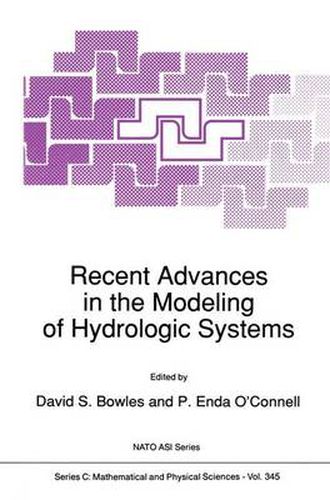Readings Newsletter
Become a Readings Member to make your shopping experience even easier.
Sign in or sign up for free!
You’re not far away from qualifying for FREE standard shipping within Australia
You’ve qualified for FREE standard shipping within Australia
The cart is loading…






This title is printed to order. This book may have been self-published. If so, we cannot guarantee the quality of the content. In the main most books will have gone through the editing process however some may not. We therefore suggest that you be aware of this before ordering this book. If in doubt check either the author or publisher’s details as we are unable to accept any returns unless they are faulty. Please contact us if you have any questions.
Modeling of the rainfall-runoff process is of both scientific and practical significance. Many of the currently used mathematical models of hydrologic systems were developed a genera tion ago. Much of the effort since then has focused on refining these models rather than on developing new models based on improved scientific understanding. In the past few years, however, a renewed effort has been made to improve both our fundamental understanding of hydrologic processes and to exploit technological advances in computing and remote sensing. It is against this background that the NATO Advanced Study Institute on Recent Advances in the Modeling of Hydrologic Systems was organized. The idea for holding a NATO ASI on this topic grew out of an informal discussion between one of the co-directors and Professor Francisco Nunes-Correia at a previous NATO ASI held at Tucson, Arizona in 1985. The Special Program Panel on Global Transport Mechanisms in the Geo-Sciences of the NATO Scientific Affairs Division agreed to sponsor the ASI and an organizing committee was formed. The committee comprised the co directors, Professor David S. Bowles (U.S.A.) and Professor P. Enda O'Connell (U.K.), and Professor Francisco Nunes-Correia (Portugal), Dr. Donn G. DeCoursey (U.S.A.), and Professor Ezio Todini (Italy).
$9.00 standard shipping within Australia
FREE standard shipping within Australia for orders over $100.00
Express & International shipping calculated at checkout
This title is printed to order. This book may have been self-published. If so, we cannot guarantee the quality of the content. In the main most books will have gone through the editing process however some may not. We therefore suggest that you be aware of this before ordering this book. If in doubt check either the author or publisher’s details as we are unable to accept any returns unless they are faulty. Please contact us if you have any questions.
Modeling of the rainfall-runoff process is of both scientific and practical significance. Many of the currently used mathematical models of hydrologic systems were developed a genera tion ago. Much of the effort since then has focused on refining these models rather than on developing new models based on improved scientific understanding. In the past few years, however, a renewed effort has been made to improve both our fundamental understanding of hydrologic processes and to exploit technological advances in computing and remote sensing. It is against this background that the NATO Advanced Study Institute on Recent Advances in the Modeling of Hydrologic Systems was organized. The idea for holding a NATO ASI on this topic grew out of an informal discussion between one of the co-directors and Professor Francisco Nunes-Correia at a previous NATO ASI held at Tucson, Arizona in 1985. The Special Program Panel on Global Transport Mechanisms in the Geo-Sciences of the NATO Scientific Affairs Division agreed to sponsor the ASI and an organizing committee was formed. The committee comprised the co directors, Professor David S. Bowles (U.S.A.) and Professor P. Enda O'Connell (U.K.), and Professor Francisco Nunes-Correia (Portugal), Dr. Donn G. DeCoursey (U.S.A.), and Professor Ezio Todini (Italy).